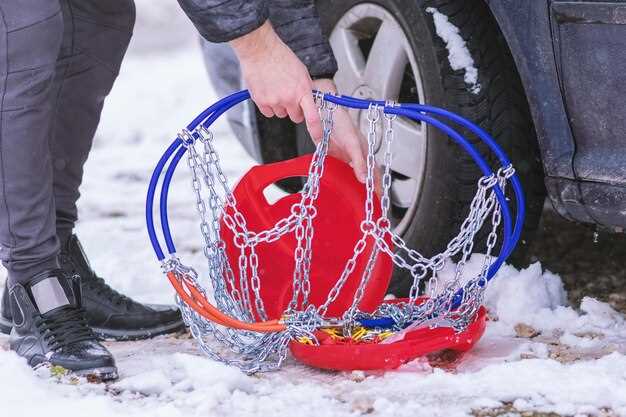
Maintaining the durability of a vehicle’s drivetrain is crucial, especially when operating in harsh conditions. Extreme temperatures, rugged terrains, and adverse weather can significantly impact the performance and longevity of drivetrain components. Understanding the potential risks and implementing preventive measures can help preserve the integrity of these vital systems.
Harsh environments can lead to increased wear and tear on components such as the transmission, drive shafts, and differentials. Exposure to dirt, debris, and moisture can exacerbate these issues, ultimately leading to costly repairs and downtime. By recognizing these challenges, vehicle owners can take proactive steps to ensure their drivetrain remains resilient.
Regular maintenance, appropriate fluid levels, and quality parts are essential for safeguarding against drivetrain damage. Additionally, employing best practices for driving in tough conditions can further enhance durability. Understanding the nuances of your vehicle’s drivetrain and staying vigilant about its care will help mitigate potential failures and extend its operational life.
Choosing the Right Fluids for Extreme Environments
In harsh conditions, selecting the appropriate fluids for your vehicle’s drivetrain is essential for ensuring optimal performance and longevity. The right fluids can significantly reduce wear and tear, enhance energy efficiency, and prevent catastrophic failures.
Engine Oil plays a crucial role in maintaining drivetrain health. In extreme environments, where temperatures fluctuate dramatically, it’s vital to choose oil that can withstand these variations. Synthetic oils are often recommended due to their superior thermal stability and ability to flow better at lower temperatures, ensuring proper lubrication under all conditions.
Transmission Fluid is another critical component. It should provide excellent lubrication and cooling for transmission components, especially under stress. Look for fluids that meet or exceed the manufacturer’s specifications for extreme-temperature performance. These specialized fluids can resist oxidation and maintain their viscosity, ensuring seamless gear shifts even in challenging conditions.
Differential Fluid should also be carefully selected. In environments with high torque demands, such as off-road scenarios, using a high-quality, multi-viscosity differential fluid can be beneficial. This helps protect against gear wear and ensures smooth operation under load.
When operating in conditions filled with dirt or water, consider using sealed systems for drivetrain components. This minimizes contamination of fluids, which can lead to increased friction and damage. Regularly checking and changing your fluids is also vital for ongoing care.
Investing time in understanding the right fluids for your vehicle’s drivetrain can greatly reduce the risk of damage in extreme environments. It not only protects your investment but also ensures your vehicle performs optimally when you need it the most.
Identifying and Addressing Early Signs of Wear and Tear

To ensure the durability of your drivetrain, it’s crucial to recognize and address early signs of wear and tear. Regular inspections can help identify issues before they escalate into serious problems. Look for unusual noises, vibrations, or changes in the performance of your vehicle, as these can indicate underlying issues.
One common sign of wear is fluid leaks. Inspect the area under your vehicle regularly for any fluids, as this could signify a failing component. Additionally, check for any unusual wear patterns on tires, which may suggest misalignment or suspension issues affecting the drivetrain.
Visual inspections of belts, chains, and other drivetrain parts are essential. Fraying, cracking, or unusual wear on these components can lead to significant damage if left unaddressed. Ensure that connectors and mounts are secure, as looseness can increase stress on the drivetrain.
Additionally, maintaining proper lubrication is vital for the longevity of your drivetrain. Low fluid levels can accelerate wear, so regularly check and change fluids as recommended by the manufacturer. This proactive care can significantly enhance the reliability and durability of the components.
Addressing these signs promptly not only extends the lifespan of your drivetrain but also contributes to overall vehicle safety and performance. Prioritizing care and maintenance helps prevent costly repairs and enhances the lifespan of your vehicle.
Implementing Regular Maintenance Routines for Longevity

Regular maintenance routines are essential for enhancing the durability of your drivetrain, especially in harsh conditions. By prioritizing care, you ensure that all components function optimally and reduce the likelihood of costly repairs or replacements down the road. Establishing a systematic approach to maintenance involves several key practices.
Firstly, conducting regular inspections is crucial. These inspections should include checking for wear and tear on vital components such as gears, shafts, and bearings. Identifying potential issues early can prevent more significant damage that may occur under strenuous conditions.
Next, performing routine lubrication of moving parts is indispensable. Proper lubrication reduces friction, helping to preserve the integrity of components and extending their lifespan. Utilize high-quality lubricants suitable for your specific environment, as they provide better protection against contaminants and extreme temperatures.
Additionally, cleaning the drivetrain components regularly helps to eliminate dust, dirt, and debris that could lead to corrosion or obstruction. Using appropriate cleaning agents ensures that all parts remain in optimal condition and can perform effectively under challenging conditions.
Furthermore, monitoring fluid levels is vital. Ensuring that oils and coolants are at recommended levels can prevent overheating and ensure that all moving parts are adequately protected. Consider setting a schedule for fluid checks to maintain consistency.
Finally, keeping a maintenance log aids in tracking service history and anticipating future needs. This proactive approach allows for timely interventions and ensures that your drivetrain remains robust over time.
By implementing these regular maintenance routines, you not only enhance the durability of your drivetrain but also promote its longevity, ultimately safeguarding your investment against the challenges posed by harsh conditions.




